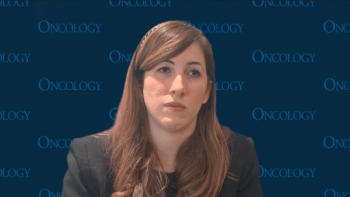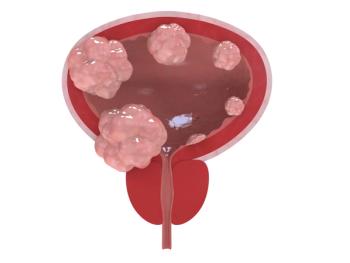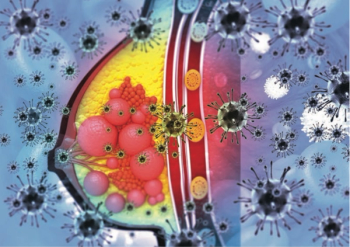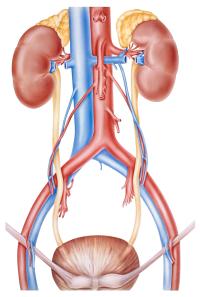Conference Coverage
about 13 hours ago
SABCS 2025: The Top 5 Takeaways for Breast Cancer Researchabout 15 hours ago
Elucidating the Impact of TROP2 on T-DXd Efficacy in Breast CancerTrending on CancerNetwork
FDA OKs Subcutaneous Amivantamab in EGFR+ NSCLC
Pelareorep Exhibits Activity in Second-Line KRAS-Mutated Metastatic CRC
Imlunestrant Combo Will Not Be Pursued for FDA Approval in Breast Cancer
SABCS 2025: The Top 5 Takeaways for Breast Cancer Research
FDA Grants Fast Track Designation to GPC3x4-1BB Bispecific Antibody in HCC
Latest News
Shorts










Podcasts

ASH 2025: Key Discussions in Multiple Myeloma, Lymphoma, and Leukemia
Experts share updated results on investigational hematologic oncology regimens that they presented at the 2025 ASH Meeting.

Why Sexual and Gender Minority Care Is an Oncologic Imperative
Daniel C. McFarland, DO; and Charles S. Kamen, PhD, MPH, focused on cultural humility, nonverbal data collection, and tailored resources to improve care.

How to Manage Oligometastatic Kidney Cancer? Insights From IKCS 2025
Experts highlight considerations for treating patients with oligometastatic kidney cancer, such as differentiating between de novo and recurrent disease.

Evolutions Across NSCLC, Multiple Myeloma, and AML at Georgia Cancer Center
Experts from Georgia Cancer Center highlight ongoing retrospective studies, translational research, and other initiatives across different cancers.

Decision-Making Capacity: The Ethical Core of Patient-Centered Oncology
Daniel C. McFarland, DO, is joined by Louis P. Voigt, MD, and Yesne Alici, MD, who focused on decision-making capacity and patient-centered care.

How Can Chlorotoxin-Directed CAR T-Cell Therapy Impact Glioblastoma Care?
Michael Barish, PhD, discusses a novel cellular therapy for patients with glioblastoma that harnesses chlorotoxin, a peptide found in scorpion venom.

How Supportive Care Methods Can Improve Oncology Outcomes
Experts discussed supportive care and why it should be integrated into standard oncology care.

What Were The Most Impactful GU Oncology Data From ESMO 2025?
Experts highlight the top 5 presentations from ESMO 2025 that may have long-term clinical implications for genitourinary cancer management.

How Will Gastrointestinal Cancer Standards of Care Change? An ESMO Recap
Three GI cancer medical oncologists discuss the most significant abstracts in GI cancers from the 2025 ESMO Congress.

What Were the Key Presentations at ESMO 2025? Oncology Experts Discuss
Presenting investigators at ESMO Congress 2025 highlight findings from clinical trials assessing novel therapeutics across different disease types.
Videos
All News

Data from the phase 3 PALOMA-3 study support the approval of subcutaneous amivantamab in this NSCLC population.

Tissue samples collected from patients with breast cancer during treatment may help explore therapy selection and predict toxicities.

Data from the ELEVATE trial may support elacestrant as an endocrine backbone in ER-positive, HER2-negative breast cancer.

Findings from the phase 3 TRITON3 trial evaluating rucaparib in adult patients with metastatic BRCA-mutated CRPC supported the regulatory decision.

A label for imlunestrant/abemaciclib ER+/HER2– advanced breast cancer with ESR1 mutations will be sought.

A clinically meaningful and statistically significant pathologic complete response rate advantage was seen with the enfortumab vedotin combination.

Clinicians can reduce doses and mitigate toxicities in an easier fashion when administering elacestrant-based treatment for those with advanced breast cancer.

Fuzuloparib monotherapy and as a combination with apatinib improved PFS as maintenance therapy in patients with ovarian cancer harboring BRCA1/2 mutations.

The 1-year EFS with CART19 was 90% among patients with B-ALL who had 1 or more CNS relapses.

The addition of pelareorep to standard-of-care therapy in patients with KRAS-mutated microsatellite-stable CRC exhibited an ORR of 33%.

A panel of experts gathered to discuss results from the MATTERHORN trial assessing durvalumab plus FLOT in gastric/GEJ cancer.

Among the 12 patients with suspected brain metastases treated with RAD 101, the images showed metabolic activity in brain metastases compared with MRI findings.

Sunil Dutta, MD, discusses how whole-breast radiation or systemic therapy is responsible for controlling low-volume disease.

Atezolizumab plus neoadjuvant therapy was found to increase chemotherapy-induced ovarian failure among patients with TNBC.

The mechanism of CTO1681 may allow it to reduce the production of a broad range of proinflammatory cytokines in DLBCL.

Data from SERENA-6 showed delayed disease progression and deterioration in QOL among patients who switched to camizestrant plus CDK4/6 inhibition.

The decision is based on results from the phase 3 MajesTEC-3 trial, which showed a PFS benefit with the teclistamab combination in patients with pretreated multiple myeloma.

Results from the phase 3 DESTINY-Breast09 trial led to the approval of T-DXd plus pertuzumab in unresectable/metastatic HER2+ breast cancer.

The BOOG 13-08 trial shows omitting sentinel lymph node biopsy is noninferior to performing it in select older patients with early-stage, HR+ breast cancer.

Younger and fitter patients with relapsed/refractory multiple myeloma were more likely to receive bispecific antibodies in community oncology settings.

Experts share updated results on investigational hematologic oncology regimens that they presented at the 2025 ASH Meeting.

Mechanistic treatment benefits were observed in the phase 2 STEM trial for patients with multiple myeloma.

Alan Pliskin and Mary Kay Yamamoto discuss their journey through multiple myeloma treatment, emphasizing the importance of knowledge, positivity, and quality of life.

Data from a retrospective cohort study showed that one-fifth of patients with multiple myeloma received bispecific antibodies in rural community settings.

Being able to treat patients with cevostamab who have multiple myeloma after 1 to 3 prior lines of therapy vs 4 lines may allow for better outcomes.

The median OS among patients with triple-class–exposed relapsed/refractory multiple myeloma with or without EMD was 12.6 months vs 36.4 months.

Expert teams debate cutting-edge lung cancer treatments, exploring trial data and innovative strategies for improving patient outcomes in NSCLC and SCLC.

“The magnitude of clinical benefit was clinically meaningful and consistent, and was regardless of PIK3CA mutations or alterations in the PIK3CA pathway, duration of prior CDK4/6 inhibitors, including patients who progress within 6 to 12 months, and the choice of prior CDK4/6 inhibitors,” said Hope S. Rugo, MD.

Using the monitoring of symptoms and quality of life platform may provide a quick and efficient system for patients to submit outcome data.

Data from the EMBER-3 trial support imlunestrant alone or in combination with abemaciclib as a chemotherapy-free treatment option.

QOL improvements were observed among AYA breast cancer survivors after utilizing a mobile health intervention.

Nuvisertib combined with momelotinib achieved a spleen volume reduction of 25% at week 24 and any given time in 50% of patients with relapsed/refractory myelofibrosis.

Data from the EPIK-B5 study support the use of alpelisib/fulvestrant in previously treated, HR-positive, HER2-negative, PIK3CA-mutated breast cancer.




































































































